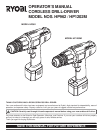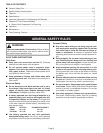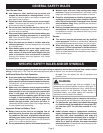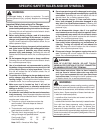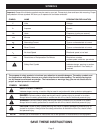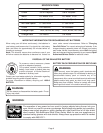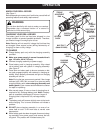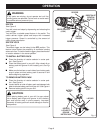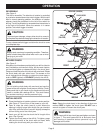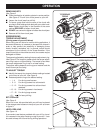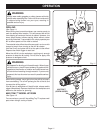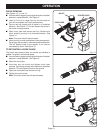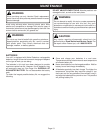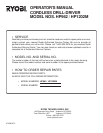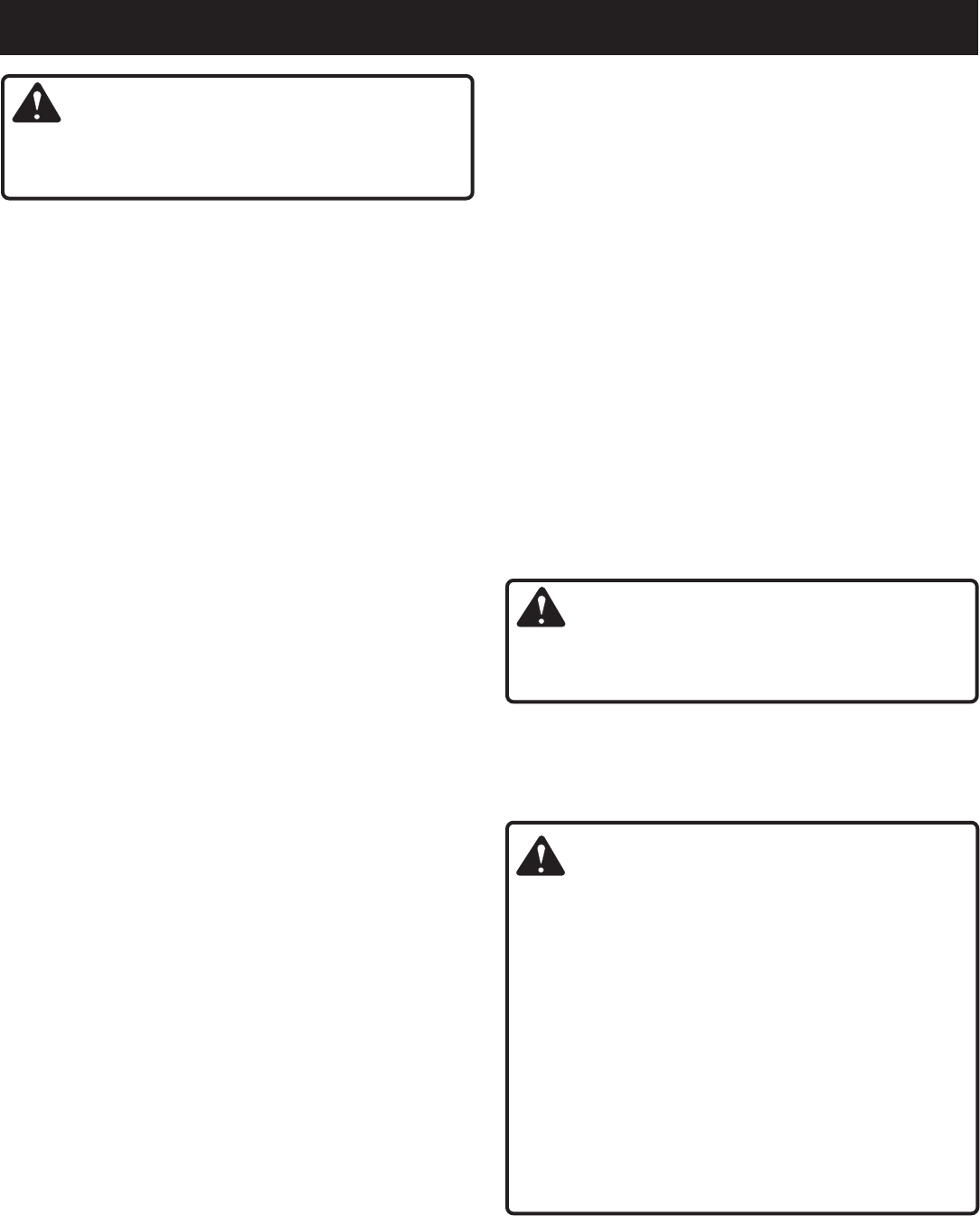
Page 4
SPECIFIC SAFETY RULES AND/OR SYMBOLS
WARNING:
Some dust created by power sanding, sawing, grinding,
drilling, and other construction activities contains chemi-
cals known to cause cancer, birth defects or other repro-
ductive harm. Some examples of these chemicals are:
• lead from lead-based paints,
• crystalline silica from bricks and cement and other
masonry products, and
• arsenic and chromium from chemically-treated lumber.
Your risk from these exposures varies, depending on
how often you do this type of work. To reduce your
exposure to these chemicals: work in a well ventilated
area, and work with approved safety equipment, such as
those dust masks that are specially designed to filter out
microscopic particles.
WARNING:
A damaged battery is subject to explosion. To avoid
serious personal injury, properly dispose of a damaged
battery.
Important Safety Instructions For Charger
■ Save these instructions. This manual contains im-
portant safety and operating instructions for charger.
Following this rule will reduce the risk of electric shock,
fire, or serious personal injury.
■ Before using battery charger, read all instructions
and cautionary markings in this manual, on battery
charger, and product using battery charger. Follow-
ing this rule will reduce the risk of electric shock, fire, or
serious personal injury.
■ To reduce risk of injury, charge only nickel-cadmium
and nickel metal hydride type rechargeable batter-
ies. Other types of batteries may burst causing
personal injury and damage. Following this rule will
reduce the risk of electric shock, fire, or serious personal
injury.
■ Do not expose charger to wet or damp conditions.
Following this rule will reduce the risk of electric shock,
fire, or serious personal injury.
■ Use of an attachment not recommended or sold by
the battery charger manufacturer may result in a risk
of fire, electric shock, or injury to persons. Following
this rule will reduce the risk of electric shock, fire, or
serious personal injury.
■ To reduce risk of damage to charger body and cord,
pull by charger plug rather than cord when discon-
necting charger. Following this rule will reduce the risk
of electric shock, fire, or serious personal injury.
■ Make sure cord is located so that it will not be
stepped on, tripped over, or otherwise subjected to
damage or stress. Following this rule will reduce the risk
of serious personal injury.
■ An extension cord should not be used unless abso-
lutely necessary. Use of improper extension cord could
result in a risk of fire and electric shock. If extension cord
must be used, make sure:
a. That pins on plug of extension cord are the
same number, size and shape as those of
plug on charger.
b. That extension cord is properly wired and in
good electrical condition; and
c. That wire size is large enough for AC ampere
rating of charger as specified below:
Cord Length (Feet) 25' 50' 100'
Cord Size (AWG) 16 16 16
Note: AWG = American Wire Gage
■ Do not operate charger with a damaged cord or plug.
If damaged, have replaced immediately by a qualified
serviceman. Following this rule will reduce the risk of
electric shock, fire, or serious personal injury.
■ Do not operate charger if it has received a sharp
blow, been dropped, or otherwise damaged in any
way; take it to a qualified serviceman. Following this
rule will reduce the risk of electric shock, fire, or serious
personal injury.
■ Do not disassemble charger; take it to a qualified
serviceman when service or repair is required. Incor-
rect reassembly may result in a risk of electric shock
or fire. Following this rule will reduce the risk of electric
shock, fire, or serious personal injury.
■ To reduce the risk of electric shock, unplug charger
from outlet before attempting any maintenance or
cleaning. Turning off controls will not reduce this
risk. Following this rule will reduce the risk of electric
shock, fire, or serious personal injury.
■ Disconnect charger from power supply when not in
use. Following this rule will reduce the risk of electric
shock, fire, or serious personal injury.
DANGER:
RISK OF ELECTRIC SHOCK. DO NOT TOUCH
UNINSULATED PORTION OF OUTPUT CONNECTOR
OR UNINSULATED BATTERY TERMINAL.
■ Save these instructions. Refer to them frequently
and use them to instruct others who may use this
tool. If you loan someone this tool, loan them these
instructions also. Following this rule will reduce the risk
of electric shock, fire, or serious personal injury.



